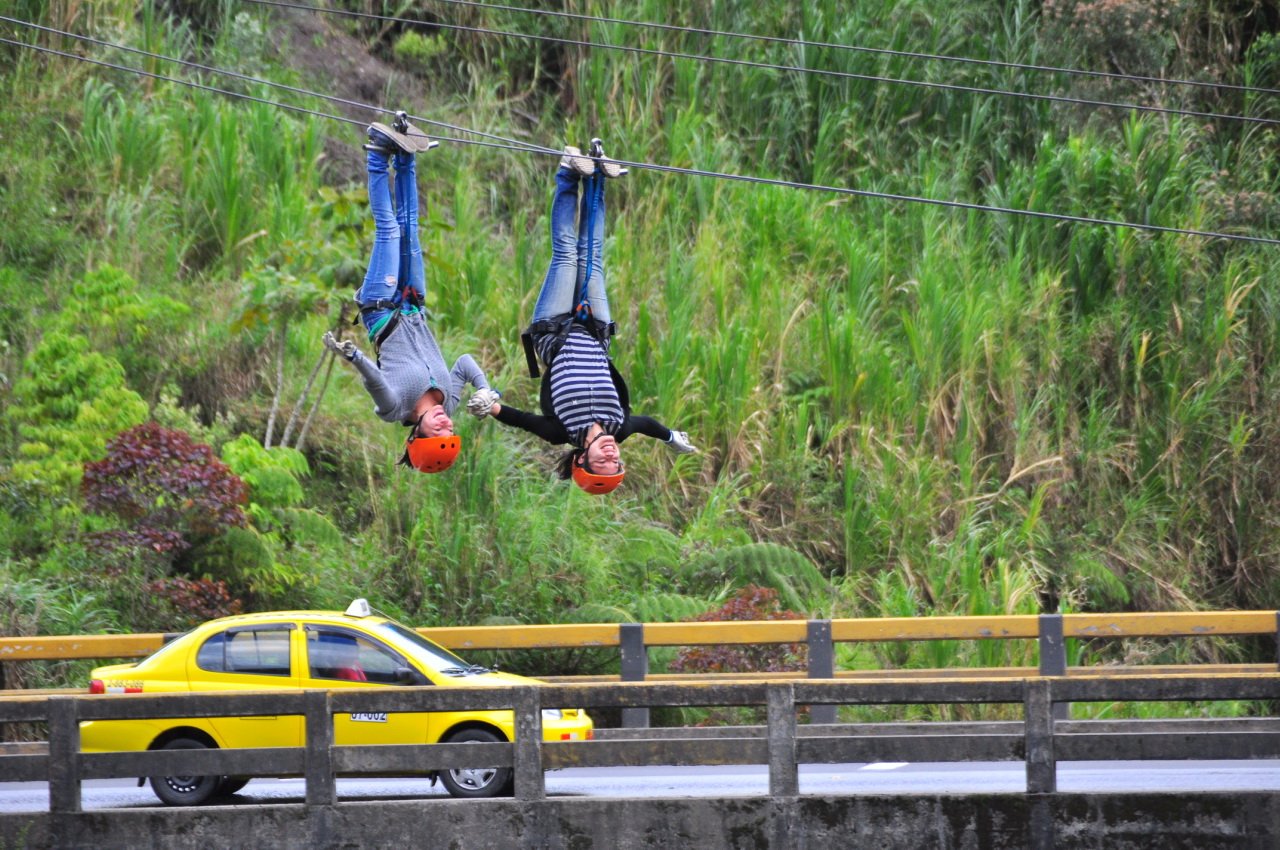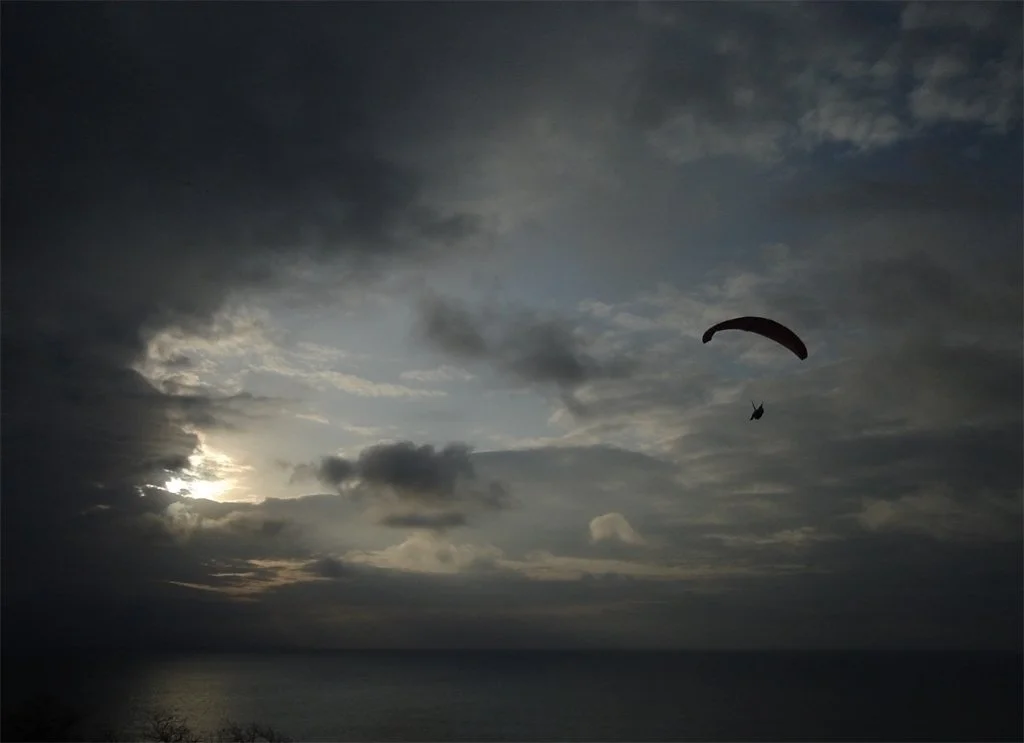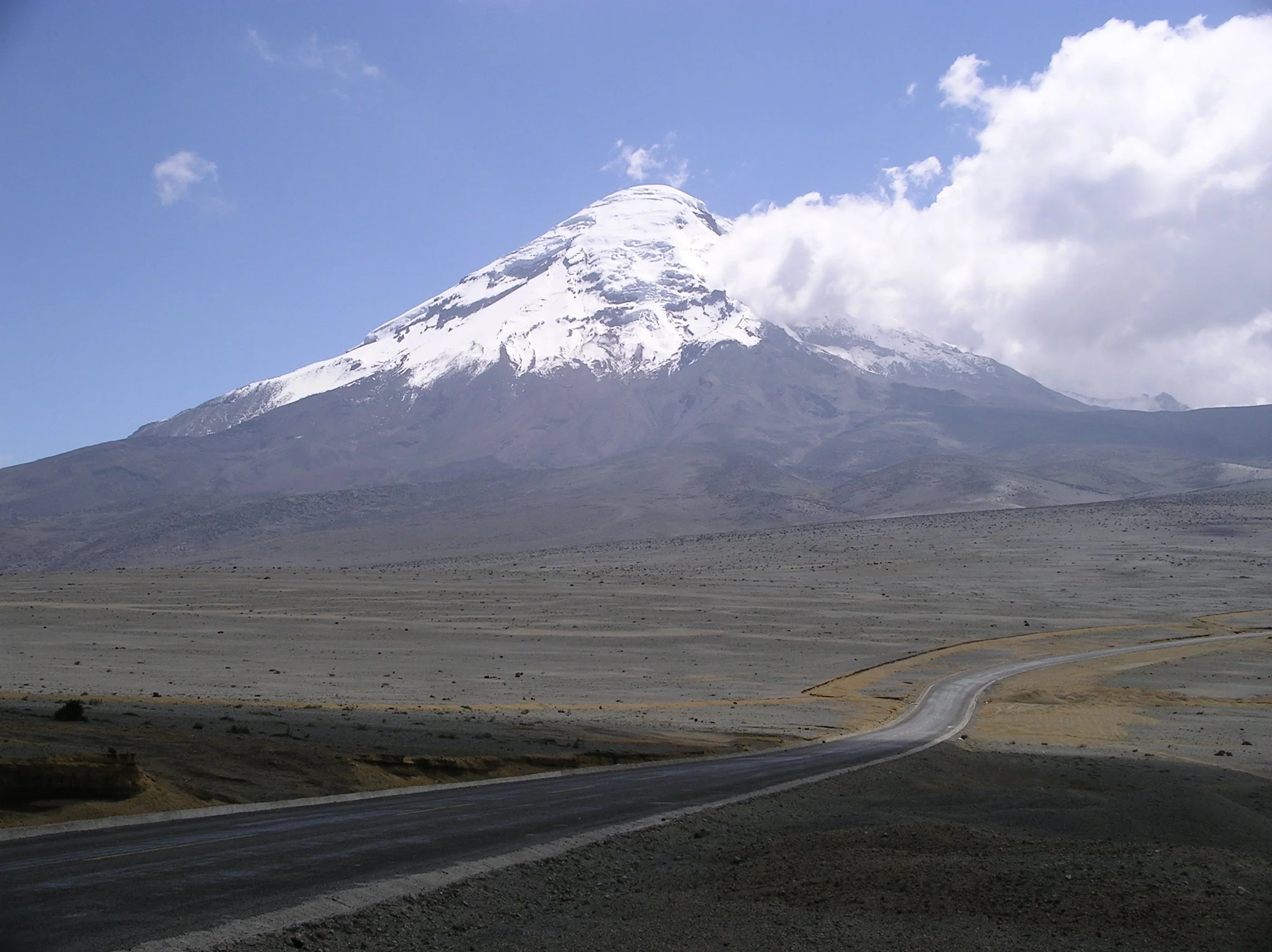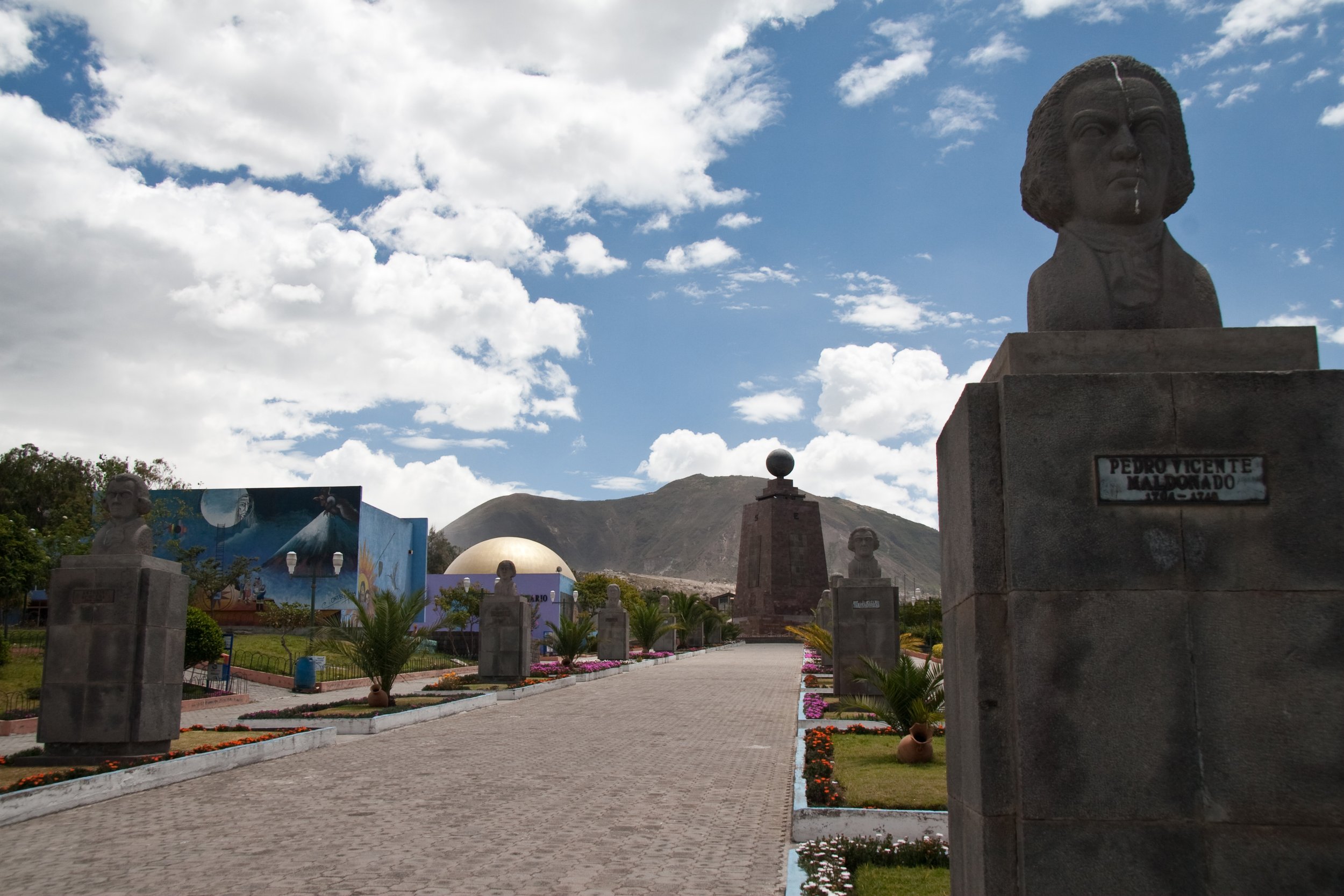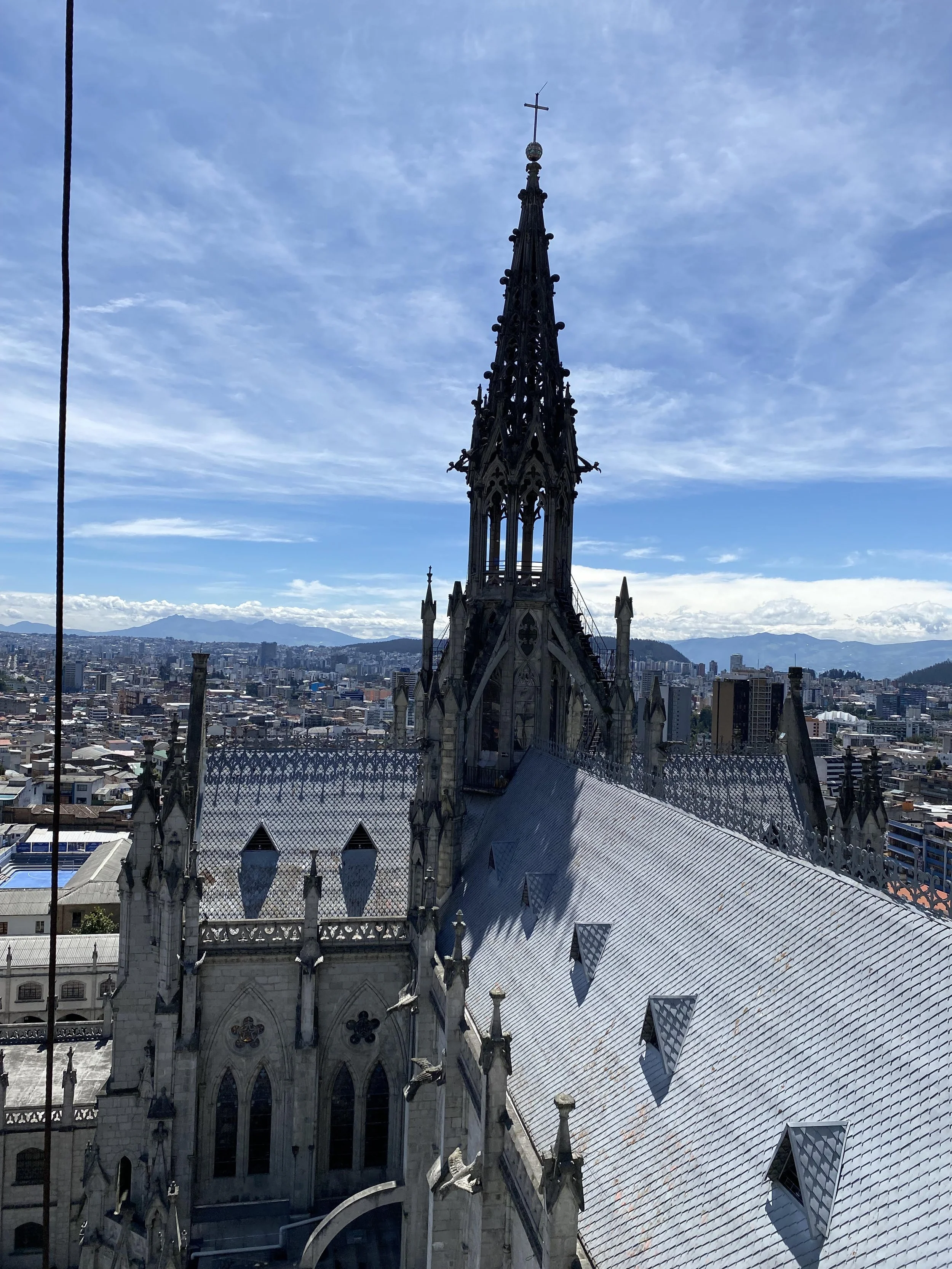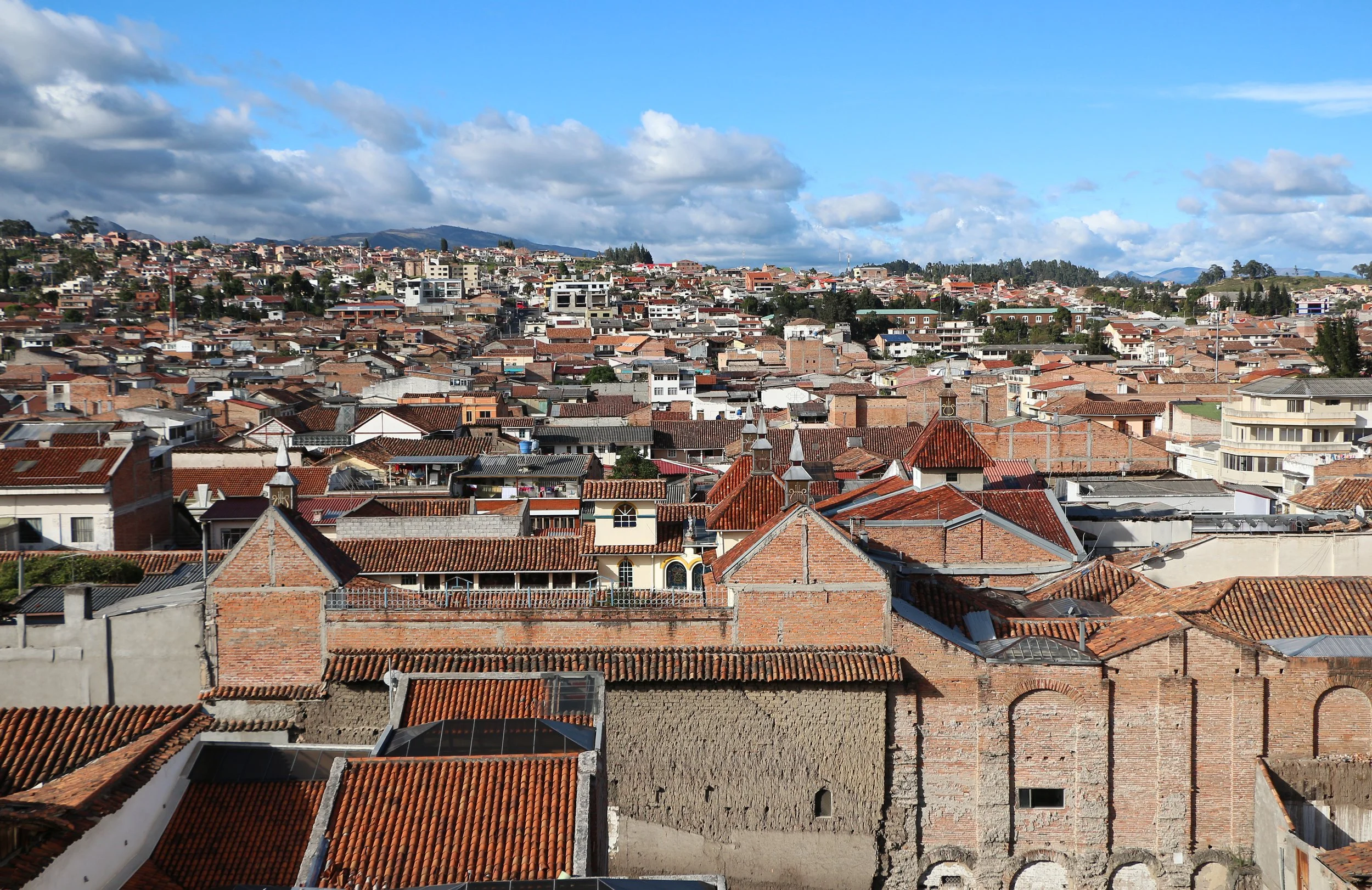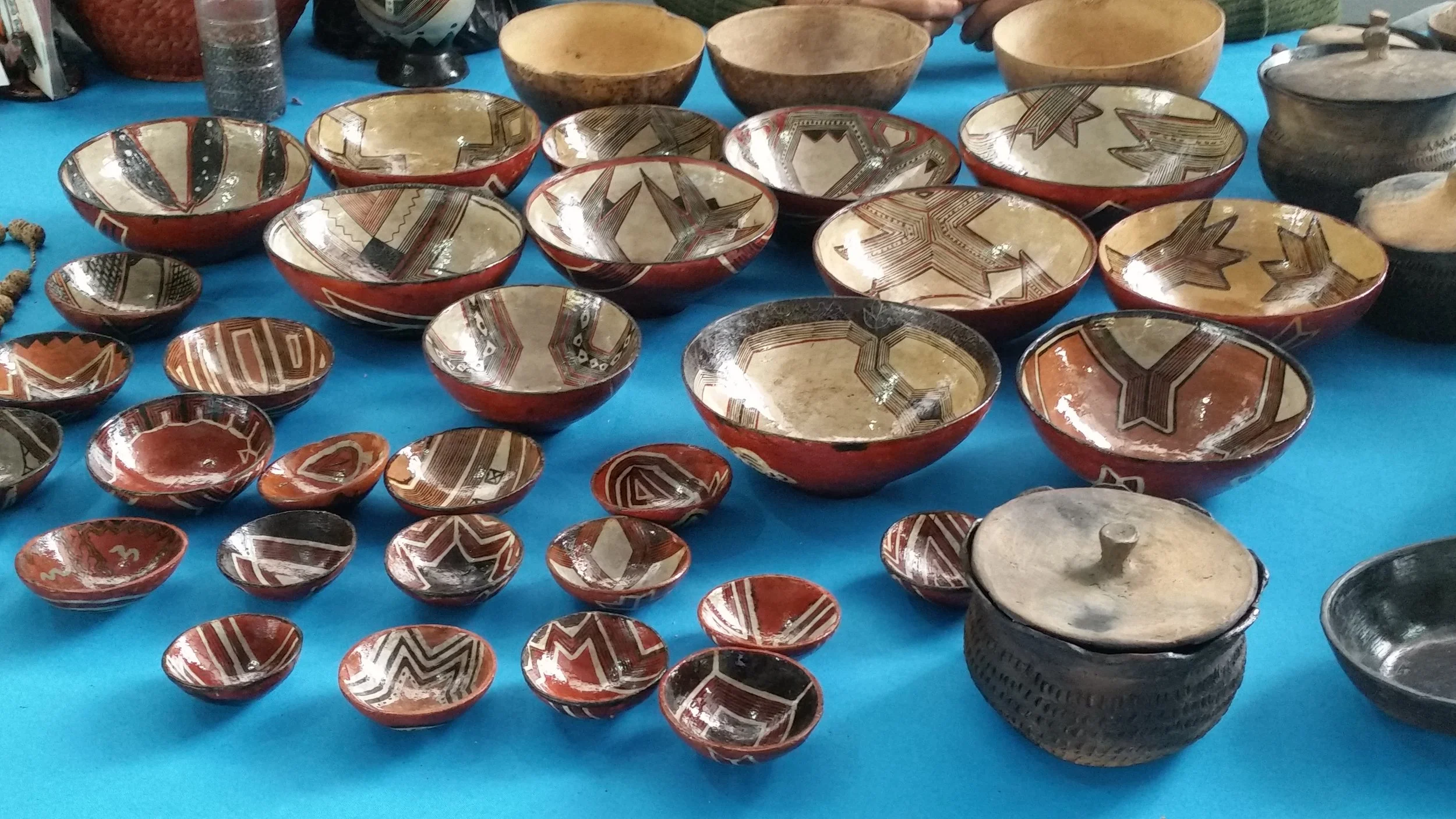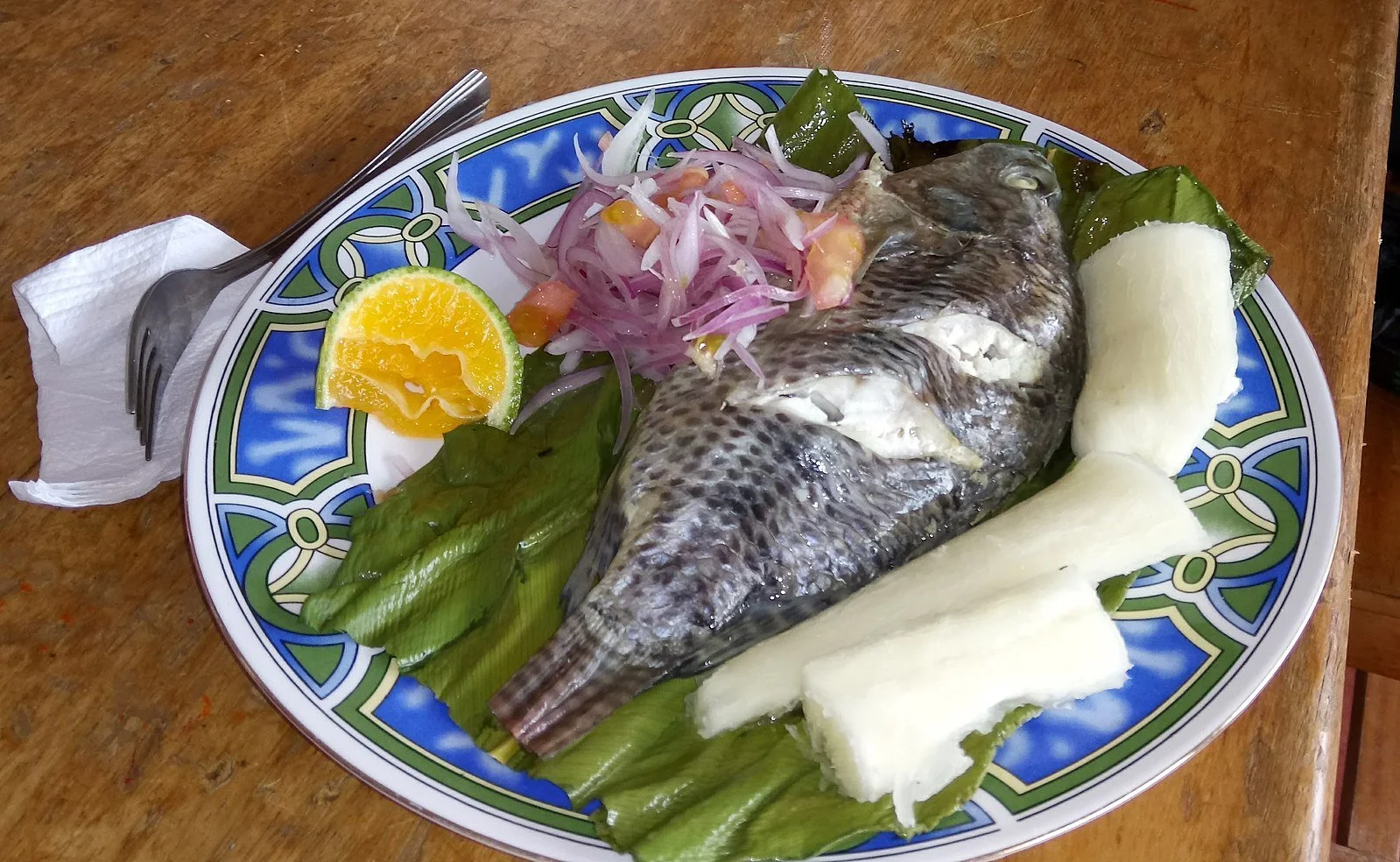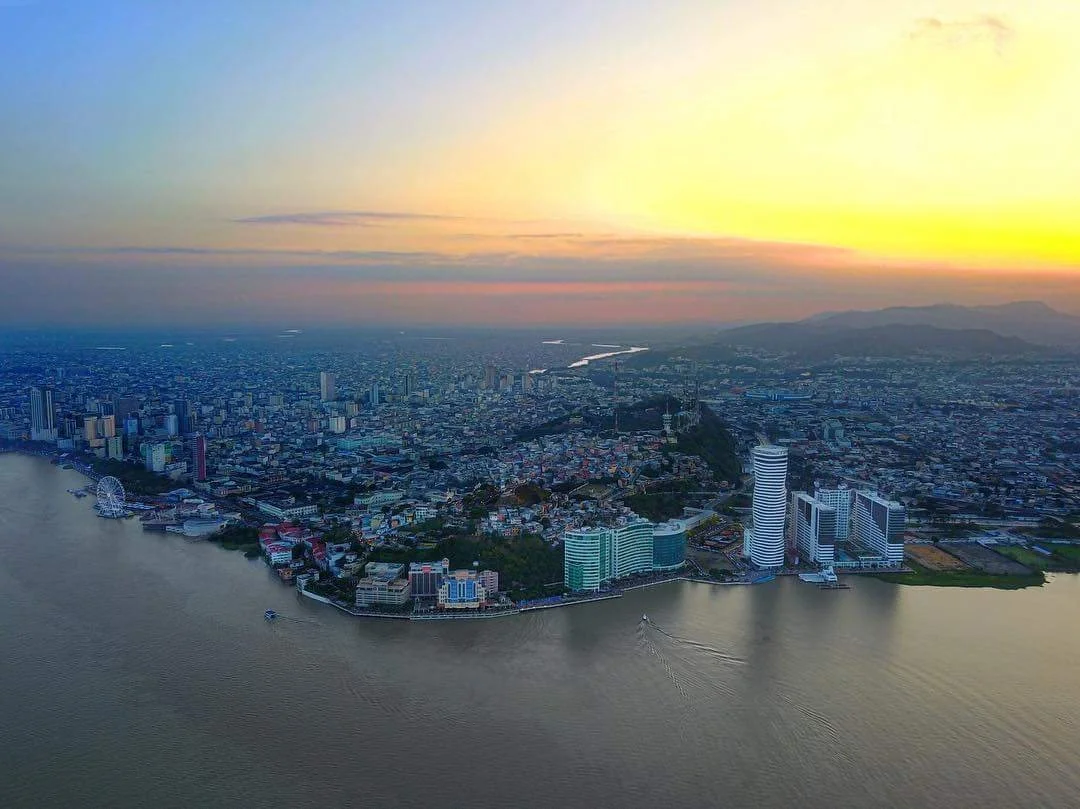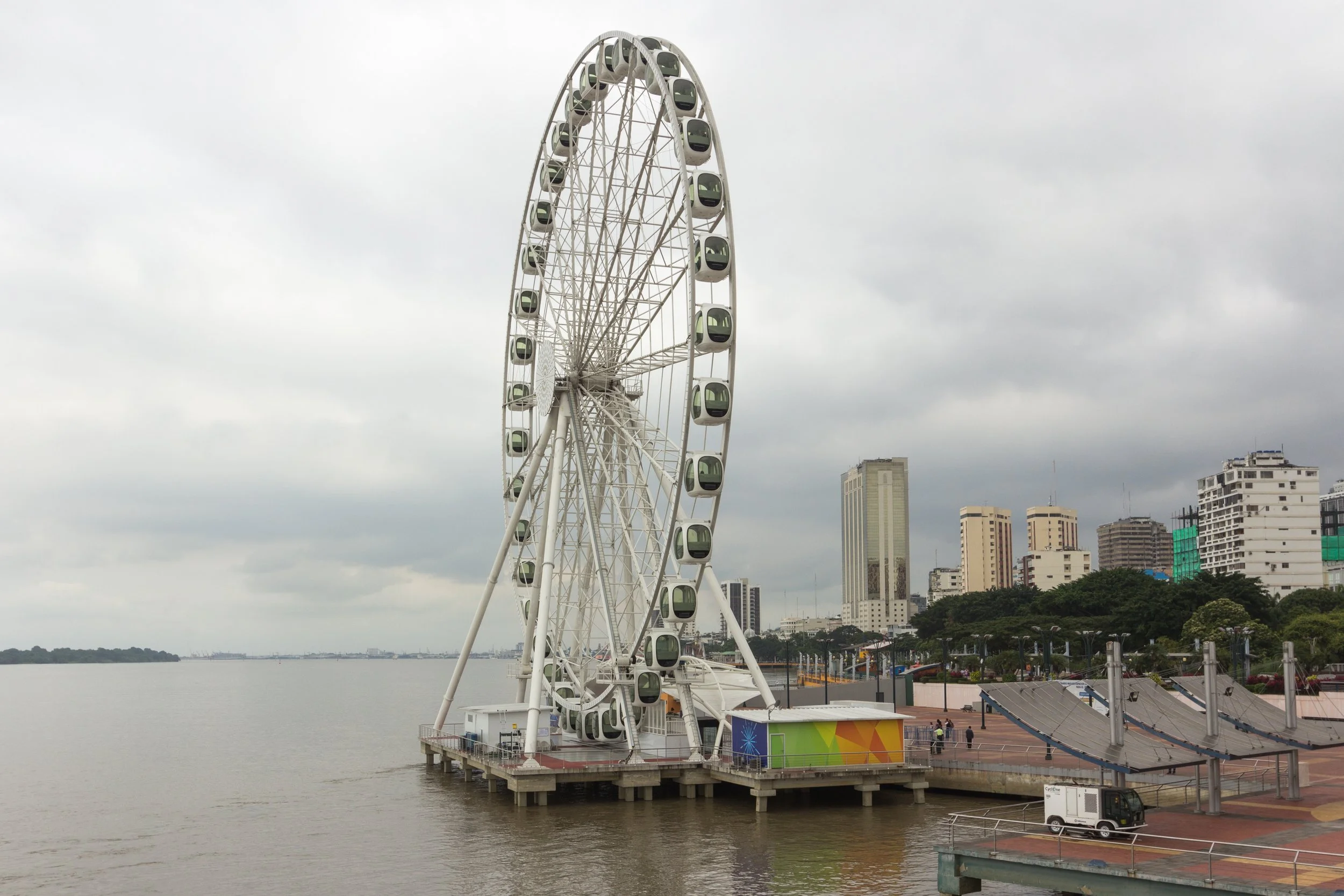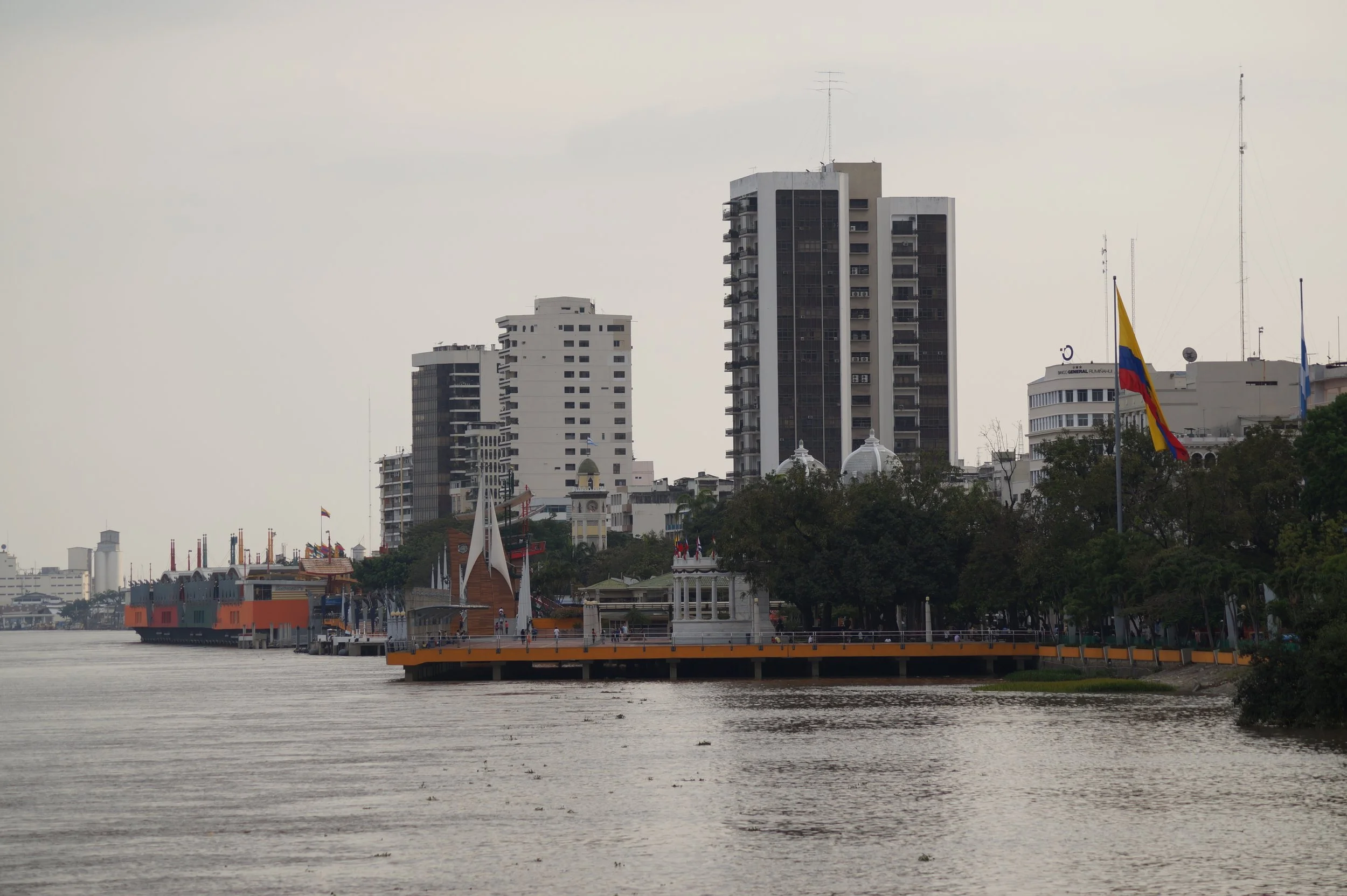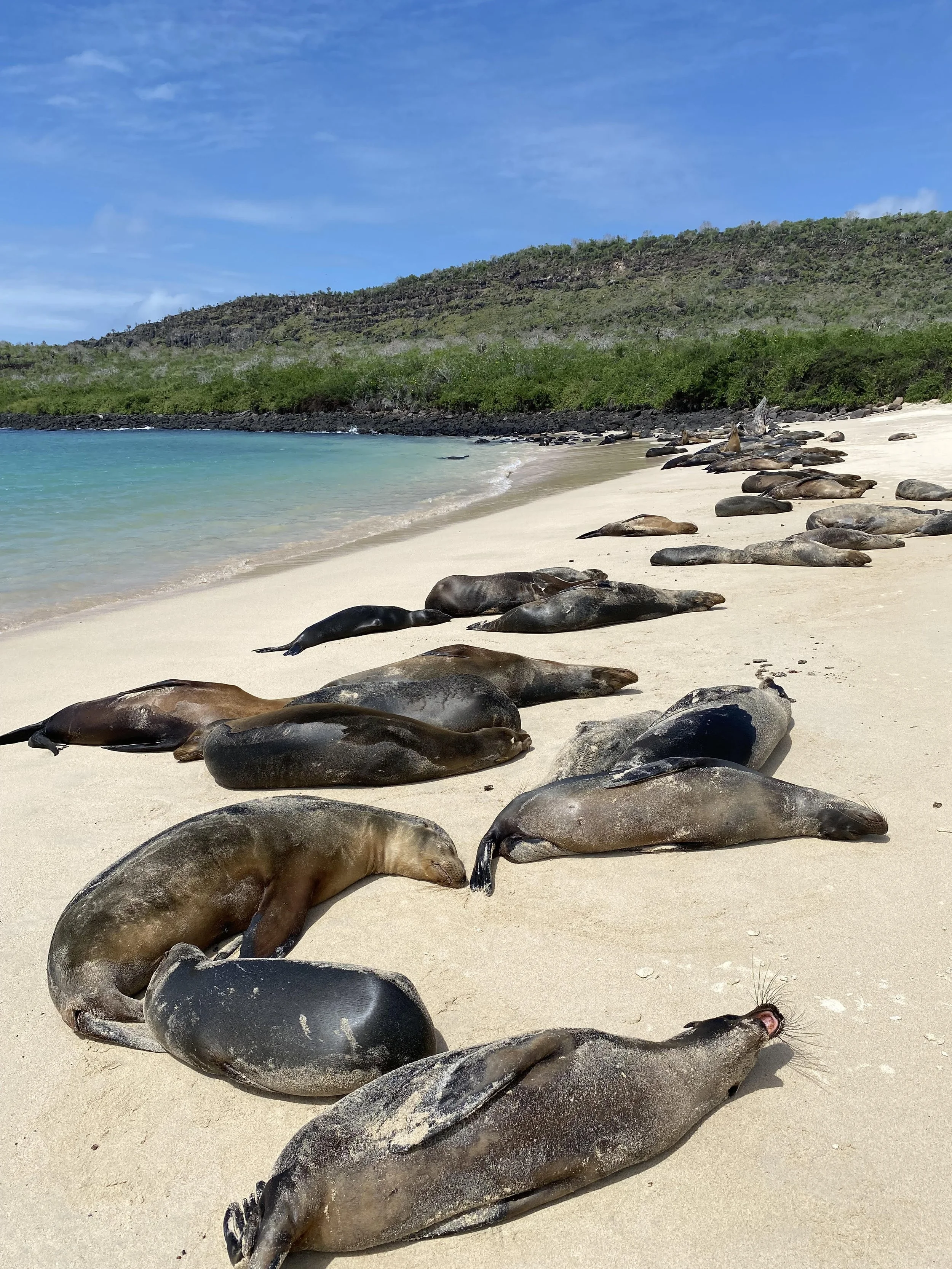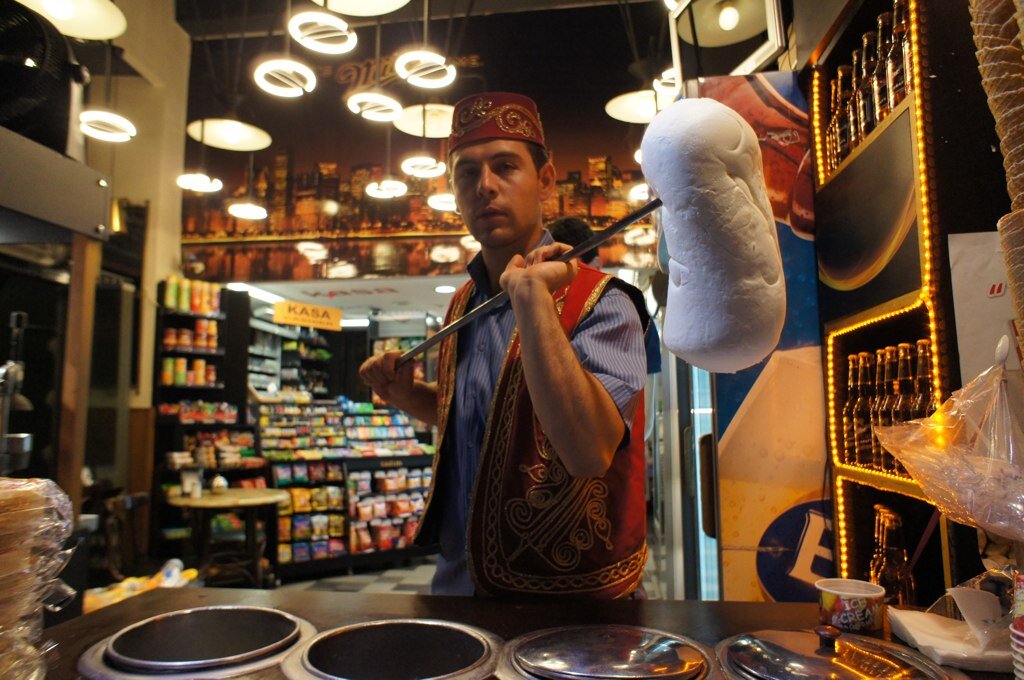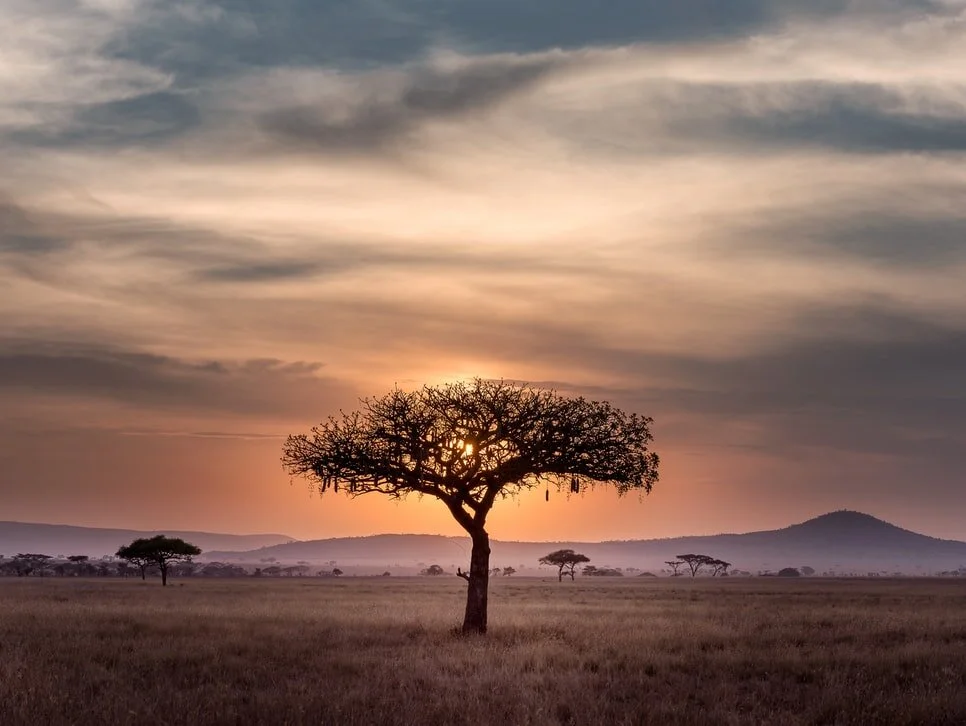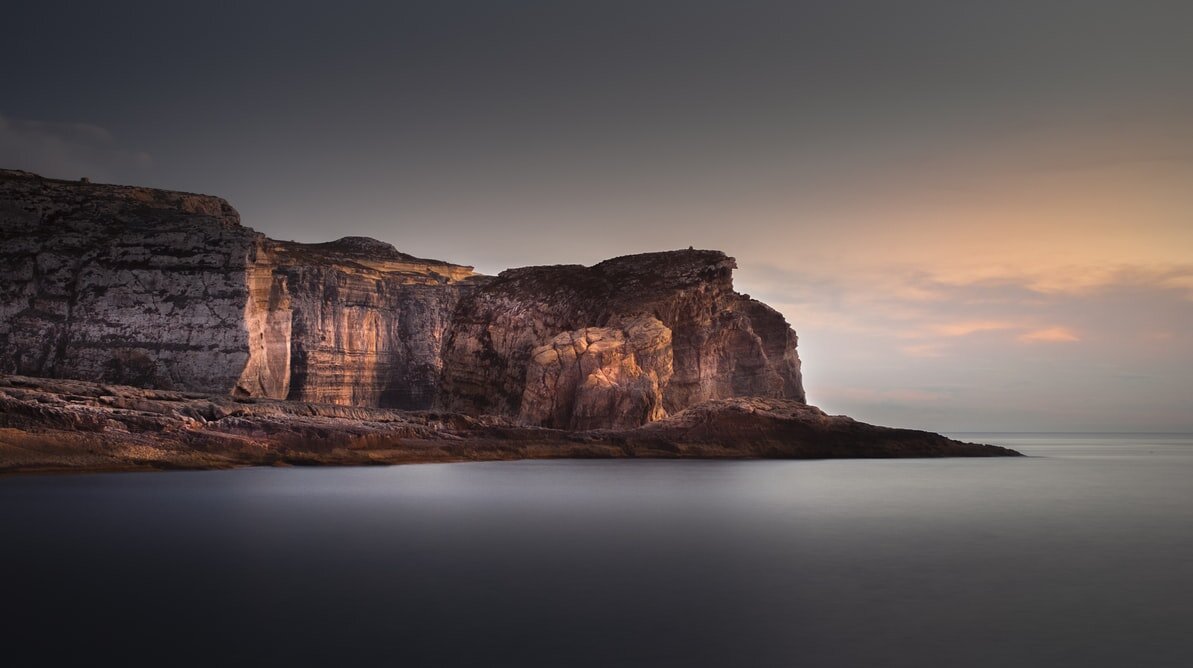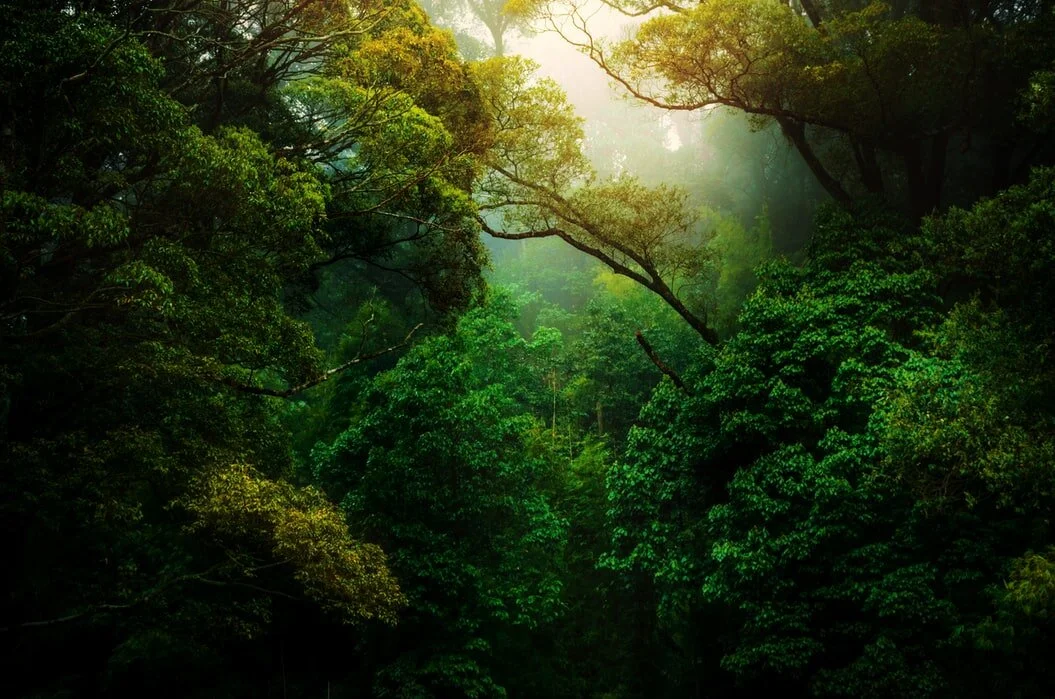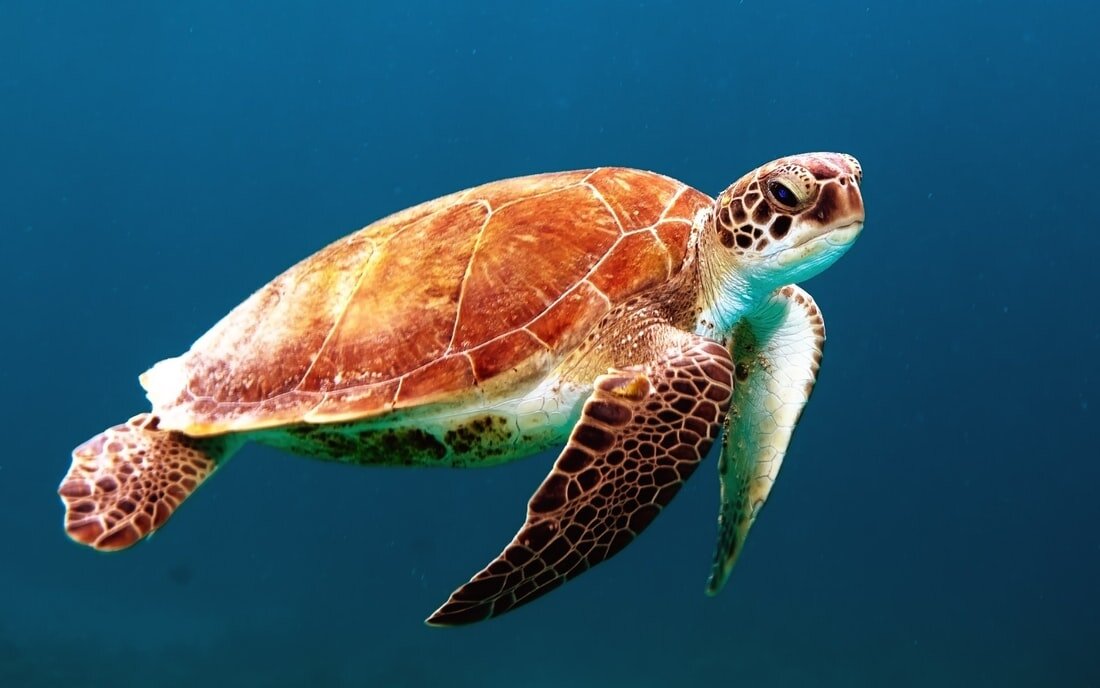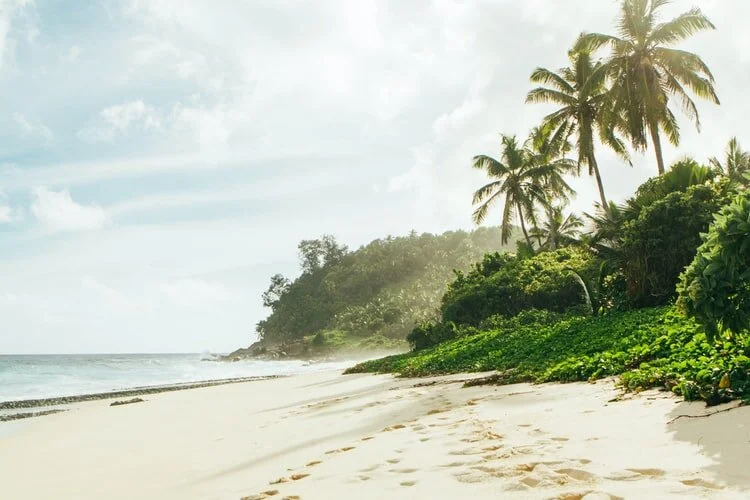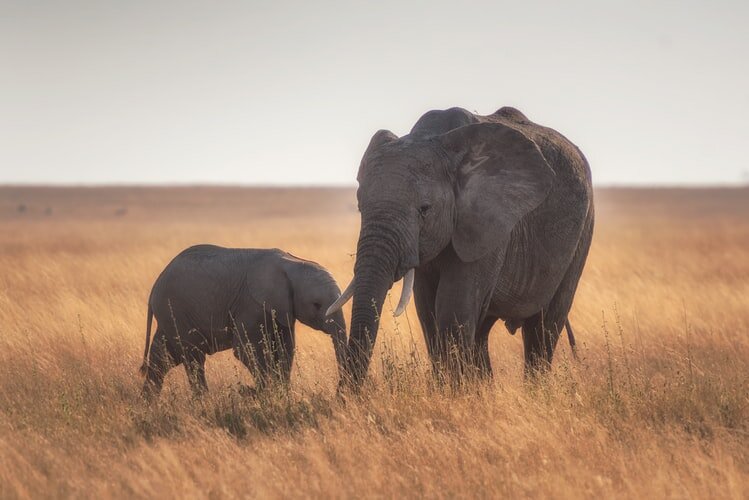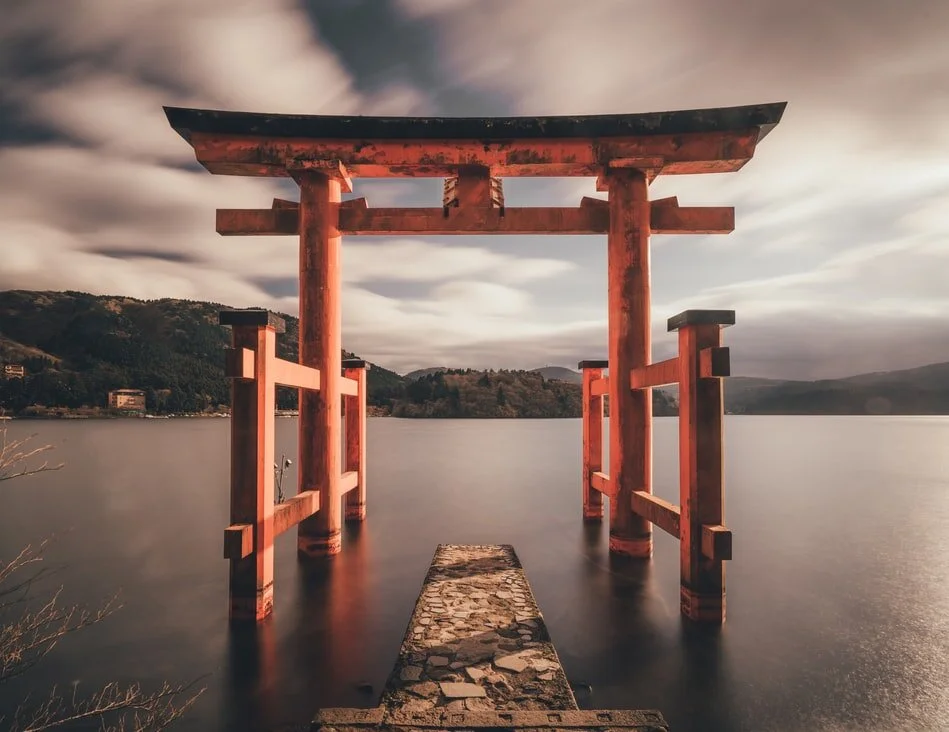How visiting the Galapagos contributes to their destruction.
Read MoreFinding Adventure in Ecuador
A country of volcanoes and valleys, Ecuador offers travelers innumerable ways to push their limits and get their hearts racing.
Swing Jumping in Baños, Ecuador. Courtesy of Jeremy Giles.
The above picture is of me jumping into a 100 meter drop from a bridge in Baños, a city bordering the Ecuadorian Amazon. It took me three tries to actually jump; the first two times I stood on the platform, I got scared and had to come down. I probably only ended up jumping because I saw two people go before me and not die. On the third try, I took a deep breath, knowing that if I didn’t jump then I never would, and leaped off. The adrenaline pumped furiously for one of the longest, most terrifying seconds of my life. Then, of course, the line pulled taut and swung me under the bridge, stopping my fall.
Canopy, Baños, Ecuador, Rinaldo Wurglitsch, CC BY 2.0
Baños, however, is more than just a city I jumped off a bridge in. It has the Andes in the West and the Amazon in the East, making it a beautiful space to see the transition between the two, home to both forests and mountains. Even more, it is the Ecuadorian hub for extreme sports. The entire town center is filled with restaurants and travel agencies, each of the latter offering what felt like hundreds of different extreme sports. Later, on the same day I bungee jumped, I went on a beautiful 6 part zipline system called the canopy, where they let you zipline upside down and even hold hands with another rider. I did it with my friend, but I imagine that if you went with a partner it would be quite romantic.
Paragliding in Ecuador, Jsan92, CC BY-SA 4.0
While Baños may be the center of extreme sports in Ecuador, it's hardly the only locale. During my first month in Ecuador I lived in Cumbaya, a suburb outside of the country’s capital Quito. One of the very first things I noticed was the steady stream of paragliders coming from a mountain behind my house. Almost every day over the next month, I’d see a few paragliders in the sky above me. Eventually I got so curious that my host dad walked me to the paragliders’ landing spot. There we learned two important things. First, while this location is good, it is also possible to paraglide on a mountain next to Quito, which is the prime location for the sport and on my bucket list of things to do when I return to Ecuador. Secondly, we saw on the ground below the paragliders a hopeful fiance-to-be had written a marriage proposal. We didn’t stay to see if the proposal was accepted, but I wish them the best of luck.
Chimborazo, Ecuador, André Hübner, CC BY-SA 3.0.
In Ecuador, a country smaller than Colorado, there are 47 volcanoes, 32 of which are on its mainland. The tallest volcano (and mountain) in Ecuador is Chimborazo, whose summit is a 6-9 hour climb, but provides such beautiful vistas as to make the trip well worth the effort. The peak of the volcano, due to the bulge of the Earth around the equator, is the farthest point from the center of the Earth on the planet’s surface. While Chimborazo was thought to be extinct, it has recently been found to be a still-active volcano.
Cotopaxi from Iliniza, Jo Simon, CC BY 2.0.
With that said, there has never been a doubt the Cotopaxi volcano, Ecuador’s second-tallest mountain, is active. Cotopaxi has erupted at least 50 times in the last 300 years. It is perhaps the most popular climbing destination in Ecuador, and towers over Quito, making its amazing views easily accessible.
If you’re interested in these experiences, offers for them can readily be found both on-site and online. Bungee jumping and zip lining in Baños costs about $20-40 per person and the paragliding near my home in Cumbaya was approximately $60-75, although I imagine it would be a bit more in Quito itself. Mountain climbing depends on the mountain and your individual plans.
Jeremy Giles
Jeremy is a Writing Seminars and International Studies major at Johns Hopkins University. He is an avid writer and the Co-Founder of Writers’ Warehouse, Johns Hopkins’ first creative writing group. He is an advocate for Indigenous rights, and studies how Indigenous philosophies can be used to help prevent climate change. Using his writing, he hopes to bring attention to underrepresented voices in today’s world.
The Four Worlds of Ecuador
In a country smaller than Colorado, there are four distinct geographical regions from the coast to the Amazon, each representing its own culture.
Quito Sunset, szeke, CC BY-SA 2.0.
Per square mile, Ecuador is the most biodiverse country in the world. In the east lies the Amazon Rainforest, known in Ecuador as “el oriente,” or “the orient” in English. The Andes rise like a spine through the middle of the country , and are known in Ecuador as “la sierra.” It is here that Ecuador’s Capital Quito is located, making it the second highest capital in the world. Bordering the ocean is the country’s coast, known as “la costa,” home to Guayaquil, Ecuador’s largest city. Finally, about 600 miles off the coast of Ecuador is the biological treasure of the Galapagos Islands, home of the Galapagos Tortoises, the biggest tortoises in the world.
I have spent the past 3 and a half months studying in Ecuador. During that time I visited three of the four major regions, and lived in both the Amazon and the Andes. Beyond the geographical differences, each region has its own cultures unique to itself. Based on my research and experiences, this article will discuss what makes each region special.
“La Sierra” - The Andes
Quito. Jeremy Giles
Quito, the capital of Ecuador and its most famous city, is located in the Andes at the center of not only Ecuador but also the world, positioned almost exactly on the Equator line, a fact that appeals to tourist so much that there are not one but two “centers of the world” in and around Quito. The “center of the world” is supposed to be the exact 0.0 line of Ecuador, so having two is very much not possible. Although only one of them is real, both are constantly crowded and attract plenty of visitors every year. In my opinion, the fake one, built up to the point it seems like its own little town, is actually nicer than the real site.
Fake Center of the Earth, Maros M r a z (Maros), CC BY-SA 3.0
If you drive away from Quito in almost any direction, you will run into a volcano. There are 17 volcanoes surrounding the city. Two of the most famous of the volcanoes, Pinchicha and Cotopaxi, are both very much active and occasionally release smoke. The volcanic mountains can be seen throughout most of Quito, creating beautiful vistas wherever you care to look.
A picture from on top of the Basilica del Voto Nacional. Jeremy Giles
Within the city itself, the star is “el centro historico,” the historic and colonial center of Quito. Here the buildings are hundreds of years old, all built in a Spanish style in a wondrous variety of pastel colors, all on top of slanting roads curving with the mountains underneath it. This branch of the city is home to the Presidential Palace and many other beautiful government buildings and churches. My favorite of all is the Basilica de Voto Nacional, a huge building with two beautiful towers looming over the city, and unlike any other Church I’ve been to, you are actually able to climb up it, giving you spectacular views of the capital. Beyond this, if you look up at the Basilica from the ground, you can see that instead of Gargoyles lining it like a typical Basilica there are famous animals from all different parts of Ecuador.
Otavalo Market, Jeremy Giles
While Quito is by far the biggest city in La Sierra, it is not the region’s only attraction. About a two hour drive from Quito is the city of Otavalo, one of the two largest Kichwa areas of Ecuador. The Kichwa peoples were part of the Inca Empire and have been in Ecuador for thousands of years. Today, their culture and language is still very much living. Otavalo is famous for its Kichwa market, where beautiful handmade blankets, sweaters, hammocks and more are created from incredibly soft alpaca wool. The prices are amazing; when I was last there I bought a beautiful alpaca wool blanket for only 20 dollars.
Cuenca, Ecuador, Bernard Gagnon, CC BY-SA 3.0
While I never had the opportunity to visit it, maybe the most beautiful city in La Sierra is Ecuador’s third largest city, Cuenca. This andean city is known for its thriving culinary scene, often serving some of Ecuador’s best traditional dishes. It has an incredibly charming appeal and is home to the beautiful El Cajas National park. When I next return to Ecuador Cuenca is for sure one of the top destinations on my list.
“El Oriente” - The Amazon Rainforest
Meeting of the Rivers, Cuenca, Ecuador
To reiterate, Ecuador is known as the most biodiverse country in the world per square mile. The Ecuadorian Amazon is the center of that biodiversity. The Amazon in Ecuador has 300 different species of mammals, 350 of reptiles, 800 of fish, and 1,600 of birds. These species are some of the centerpoints of Amazonian culture in Ecuador. Per indigenous Kichwa beliefs, the Pachamama created the Earth, and the Amazon for its people. When shamans, traditional healers, die, they become a “boa” or “tigre,” general words in the Ecuadorian Amazon for a very large snake or a big cat. The latter is a false friend for English speakers; although “tigre” translates directly to “tiger,” there aren’t actually any tigers in the Amazon.
Mocahuas, David C. S., CC BY-SA 4.0
While visiting the Amazon I lived in the Pastaza province, the largest province in Ecuador, and an area almost entirely covered by the Rainforest. Somehow, Pastaza manages to be just as diverse culturally as it is biologically. In Pastaza alone, there are seven different independent Indigenous groups, each with its own separate language, culture, and customs. There are significant efforts in the region to make sure these languages survive, and in schools students learn both Spanish and their Indigenous language.
A street in Puyo, Ecuador, Jeremy Giles
For the month I was in Pastaza, I stayed in its capital Puyo, an incredibly diverse multi-ethnic city of about 40,000 people. There, I felt as welcomed as I’ve ever felt anywhere. Through the generosity of my host families I got to experience many of the special things about Puyo. Here, I will share with you one of my favorites: the food. The Amazon river provides the families of Puyo with an amazing abundance of fresh fish, particularly tilapia, at prices even cheaper than Ecuadorian norm. Once, my host family bought nine individual portion sized live tilapia for 12 dollars.
Maito, Iestrella, CC BY-SA 4.0
After buying the fish, the typical method of preparation is to make a dish called “Maito.” When cooking Maito the family will cut down a really big leaf. They will then put the fish in the leaf and wrap it up. They put this over the fire and let the fish cook. Then they will open the leaf and serve with fish, often accompanied with grilled plantains and a potato-like root vegetable called yucca that is native to the region. Traditionally, the family does not filet fish or remove the skin and eats everything but the bones. I did this while I was there and while it is often avoided in the west, I found the skin quite rich.
“La Costa” - The Coast
An Aerial View of Guayaquil, JorgeAlejanDroo, CC BY-SA 4.0
It's impossible to talk about the Ecuadorian coast without discussing the biggest city in all of Ecuador, Guayaquil. While Guayaquil lacks the aesthetic beauty of Quito in the Andes, it is impressive in its own right. Quito is an old city that is sprawled over many many miles, with hardly any tall buildings. Because of this, Guayaquil, a city working hard to modernize, is the home to Ecuador’s tallest building. Along with this is “la perla” or “The Pearl,” which, during its opening in 2015, was the largest ferris wheel in South America.
Ferris Wheel in Guayaquil, Sebastian Reategui, CC0, via Wikimedia Commons
Although the star of Guayaquil, and home to said ferris wheel, is “El Malecon 2000.” El Malecon 2000, named after the year it was opened, is a gorgeous 2.5 kilometer riverfront promenade. Located along the path are plenty of attractions, including a museum of anthropology, an Imax theater and a garden, adorned with its own koi ponds.
Malecon 2000, Guayaquil, Padaguan, CC BY-SA 3.0
It should be noted, however I was in Ecuador as part of a study abroad program. During the program, in our last month, we were allowed to select almost anywhere in Ecuador to conduct an independent study. The two places we were not allowed to study were Ecuador’s border with Colombia, and Guayaquil. Ecuador as a whole has a problem with theft and crime. During my time living in and around Quito and Puyo that was always manageable. If you take common sense precautions and are careful, generally speaking, you’ll be okay, just like in a large city in the United States. The same cannot always be said for Guayaquil, especially for foreigners, who may become more of a target because of their manner of speaking and the color of their skin. Guayaquil is a beautiful city that locals frequent often for its climate, culture, and the amazing beaches of Ecuador’s coast. Foreigners can visit too, but they must exercise a considerable amount of caution.
The Galapagos Islands
Galapagos Tortoise, Mike's Birds from Riverside, CA, US, CC BY-SA 2.0
The Galapagos Islands are famous for their finches, which Darwin used to prove the existence of evolution. These birds, ironically, while perhaps the most famous species of the islands, are also one of their least impressive, looking just like small sparrows. The Galapagos’ namesake species however, the Galapagos tortoise, is a different story. These gentle behemoths are the biggest tortoises in the world, and one of the few creatures on Earth with a longer lifespan than humans, frequently living over 120 years old.
Sea Lions laying on a beach, Jeremy Giles
To add to the tortoises, the Galapagos has a slew of amazing native species, many of which can only be found on the islands. There are native penguins and flamingos, frigate birds with huge red pouches under their throats that can blow up like balloons and a bevy of sea lions loitering across the beaches. My personal favorite is the marine iguana, the only marine lizard species in the world and one that, while swimming, looks almost like a snake with legs.
Puerto Ayora Harbor, Santa Cruz Island, Galapagos, David Broad, CC BY 3.0
In addition to the animal species, the Galapagos also has a significant population of people. Four of the 13 major islands are home to around 30,000 permanent residents. While the islands are in the same region, each one has its own individual culture and way of seeing the world. These cultures, due to the interests of foreign countries in protecting the Galapagos, are often very diverse, creating a very interesting dining scene. The biggest town in the Galapagos is Puerto Ayora on Santa Cruz Islands, with a population of more than 10,000.
Jeremy Giles
Jeremy is a Writing Seminars and International Studies major at Johns Hopkins University. He is an avid writer and the Co-Founder of Writers’ Warehouse, Johns Hopkins’ first creative writing group. He is an advocate for Indigenous rights, and studies how Indigenous philosophies can be used to help prevent climate change. Using his writing, he hopes to bring attention to underrepresented voices in today’s world.
Beyond Ice Cream, 7 Frozen Treats From Around the Globe
Ice cream is an ancient dessert, dating back to the second century B.C.. Since that time, countries around the world have developed their own versions of ice cream, from Indian kulfi to Ecuadorian Helado de paila.
Turkish dondurma is often served on a plate. tuhfe. CC BY 2.0
Ice cream is one of the most popular desserts in the United States. 6.4 billion pounds of ice cream were produced in the US in 2019 alone., The International Dairy Foods Association reports that, on average, each American consumes over 22 pounds of ice cream and other frozen desserts annually. But ice cream is not an American invention. The frozen dessert dates back to the second century B.C., when records show that leaders like Alexander the Great enjoyed ice and snow flavored with honey or nectar as a delicacy. Ice cream as we know it today likely derives from a recipe collected from the Far East by Italian explorer Marco Polo in the 16th century.
The ancient confection made from snow or ice flavored with honey, nectar, or fruit is present in historical records from around the world. While in England and America this treat evolved into the milk and cream based ice cream which we know today, other countries developed different versions of frozen desserts. Here are 7 frozen treats from around the globe, all impacted by the cultures that created them.
1. Dondurma, Turkey
Dondurma—the Turkish word for “freezing,” and sometimes referred to as Turkish ice cream—is often eaten with a knife and fork. Dondurma differs from American ice cream in several ways, the most obvious being the texture. While American ice cream is soft and creamy, dondurma is stretchy, chewy and does not melt easily, hence why it is most often served on a plate with a knife and fork. Dondurma is made from a milk and sugar base and added Arab gum, or mastic, a resin that gives the ice cream its chewiness. In addition to mastic, dondurma is thickened with salep, a flour made from the root of a purple orchid which grows in the mountains. The creation of dondurma is credited to the town of Kahramanmaraş, located at the foot of the Ahir Mountain in southern Turkey. The town has been producing dondurma for over 150 years, but the origins of the treat date back even further. Over 300 years ago, the people of the area mixed clean snow from the mountain with molasses and fruit extracts, creating an early form of ice cream. Today, dondurma is frequently served sprinkled with pistachios and can be found at restaurants as well as street vendors, where it is served in cones.
Colorful mochi ice cream. jpellgen (@1179_jp). CC BY-NC-ND 2.0
2. Mochi Ice Cream, Japan
Traditionally a dessert sold and eaten during the Japanese New Year, mochi has recently soared in popularity, especially in the United States. The term mochi refers to a unique Japanese delicacy dating back to 794 A.D., which is made from sticky rice dough. In Japan, mochi is most often enjoyed in small, round balls filled with red bean paste—a treat known as daifuku. In ancient times, mochi was made to be presented as an offering to the gods at temples and was also served to the Emperor and other nobility. Although mochi itself has been around for centuries, mochi ice cream was not developed until the 1980s. And, despite its Japanese roots, mochi ice cream is actually an American invention. It was created by Frances Hashimoto and her husband, Joel Friedman, who ran a Japanese-American bakery in Los Angeles during the 1980s. During a trip to Japan, the couple was inspired by the traditional daifuku to create their own mochi treat using ice cream. Today, mochi ice cream is sold at almost all major grocery stores and is available in a wide variety of flavors, like green tea, chocolate, mango and red bean.
Chocolate, Kesar, and Mango flavored kulfi. richardclyborne. CC BY 2.0
3. Kulfi, India
While often categorized as an Indian ice cream dish, kulfi is denser and creamier than ice cream, more closely resembling frozen custard. Kulfi is made from boiling milk until it solidifies, which is called khoa. Sugar is then added to the milk and the mixture is flavored as desired, typically using natural flavoring ingredients. Popular kulfi flavors include saffron, pistachio, mango, avocado and cardamom. After the kulfi mixture is flavored, it is poured into molds and frozen until the treat has set. Kulfi is thought to have originated in northern India during the 16th century Mughal Empire. Traditional desserts in that area already included condensed milk, and the Mughals added pistachios and saffron for flavoring and then froze the mixture in metal cones using a combination of ice and salt, giving rise to the kulfi dessert served today. Kulfi is popular not only in India but in Bangladesh, Myanmar, Pakistan and the Middle East as well. The dish can also be found in many Indian restaurants around the world.
Different flavors of Italian gelato. arsheffield. CC BY-NC 2.0
4. Gelato, Italy
Gelato is an Italian delicacy which differs from traditional American ice cream in its silky, creamy texture, as well as being denser. Gelato and American ice cream both contain milk and cream, but authentic gelato uses more milk than cream and does not usually contain egg yolks, which are a common ingredient in many ice creams. Gelato typically contains less butterfat as well, which makes the flavors more intense. It is also served at a temperature 10-15 degrees warmer than ice cream, so it melts more easily in one’s mouth. Modern gelato dates back to the Renaissance when Cosimo Rugierri, an alchemist, created a dessert from fruit, sugar and ice that delighted the powerful Medici family in Florence. Other accounts of modern gelato credit architect Bernardo Buontalenti, who is said to have prepared an ice cream dish from milk, egg yolks, wine, fruit and honey and served it to King Charles V of Spain. Whatever its origins, gelato quickly spread out of Italy, becoming a delicacy in other countries as well. Until 1686, however, gelato was mainly served in private residences of the wealthy, as ice and salt were expensive. Then, Italian Francesco Procopio Cutò opened a cafe in Paris where he sold gelato to the public. Since then, gelato has become a wildly popular treat that can be found on nearly every street in Italy and in restaurants and shops around the world.
5. Helado de paila, Ecuador
Helado de paila, literally “ice cream from a pot,” is a sorbet-like treat from Ibarra, Ecuador. The story goes that, 122 years ago in Ibarra, a teenage girl named Rosalía Suárez had nothing to give her friend as a 15th birthday gift. So, she decided to make her a dessert. Rosalía and a friend put natural fruit juice in a container and placed it on a wooden tray, where the container was surrounded by ice and straw to preserve it. They began to spin the container and beat the fruit juice, which turned into a form of ice cream. Rosalía perfected her recipe by adding sugar to the fruit juice and salt to the ice and began to sell her ice creams. Today, helados de paila are prepared in a way very similar to the technique that Rosalía Suárez first used. A blend of fruit and sugar is poured into a wooden bowl sitting in a larger bowl, or paila, which is already prepared with a layer of straw and a layer of ice and salt. The fruit mixture is stirred and eventually cools into the creamy helado de paila. Popular flavors include strawberry, blackberry, coconut, tree tomato and passionfruit.
Spaghettieis is made to look like a bowl of spaghetti. Joshua Shapiro. CC BY-NC-SA 2.0
6. Spaghettieis, Germany
This popular German sundae is made from vanilla gelato, strawberry sauce and white chocolate shavings. The dish sounds innocuous enough, but what makes this treat unique is its presentation: the sundae is made to look just like a bowl of spaghetti. Spaghettieis was invented in 1969 by Dario Fontanella, whose father had moved from Northern Italy to Mannheim, Germany, in the 1930s. In an attempt to honor his Italian roots at the German ice cream parlor his family owned, Fontanella decided to create a bowl of spaghetti entirely from ice cream. Spaghettieis is made by putting vanilla gelato through a chilled spaetzle press (a machine to make German egg noodles) to achieve the spaghetti-noodle shape. The gelato is then topped with strawberry sauce to mimic tomato sauce, and shaved white chocolate curls to mimic parmesan. Apparently, when spaghettieis first began being served at ice cream parlors, it made children cry in disappointment that they were being served pasta rather than a dessert. Despite its tearful start, the dessert is widely popular today. Fontanella never patented his creation, so a variation of spaghettieis is served at nearly every ice cream parlor in Germany.
7. Akutaq, Alaska
Named after the Inupiaq word for “to stir,” Akutaq is an Indigenous Alaskan treat made by mixing fat, oil, berries and sometimes water or fresh snow together into a sweet dessert with a whipped texture. While berry-based akutaq is more similar to an American sorbet, there are also meat-based akutaqs in which the fat and oil are mixed with ground caribou or dried fish to create a more salty, gamey and savory dish. Traditionally in indigenous communities, the dish was made by women after the first catch of a polar bear or seal, and shared with members of the community. Akutaq varies by region depending on what types of flora and fauna are available to add. Indigenous people near the Alaskan coast used saltwater fish, while those inland used freshwater fish, and those in the north used bigger game like caribou, bear and musk-ox. Indigenous Alaskans have been making akutaq for thousands of years. Up until the 20th century, indigenous Alaskans held akutaq cooking contests during annual trade fairs, where members of various communities would compete to create new flavors. While akutaq can still be found today, in modern recipes the traditional caribou fat and seal oil are often replaced with Crisco and olive oil.
Rachel Lynch
Rachel is a student at Sarah Lawrence College in Bronxville, NY currently taking a semester off. She plans to study Writing and Child Development. Rachel loves to travel and is inspired by the places she’s been and everywhere she wants to go. She hopes to educate people on social justice issues and the history and culture of travel destinations through her writing.
Sunrise on the Serengeti. Hu Chen. Unsplash.
10 Travel Destinations Paving the Way in Sustainability
According to the United Nations, the global community must take drastic measures to alleviate the climate crisis. The Intergovernmental Panel on Climate Change, composed of nearly 1,300 scientists, predicts that global warming could increase worldwide temperatures up to 2.7 degrees Fahrenheit by 2040. This temperature rise will almost certainly exacerbate food insecurity, disease transmission, sea level rise and loss of ecosystems. From 2009 to 2013, international travel alone accounted for 8% of global greenhouse gas emissions. Roughly 1.4 billion people travel to a new destination each year, indirectly contributing to air pollution, land degradation and strained resources. These current levels of travel threaten the Paris Agreement, which proposes an annual 7.6% decrease in greenhouse gas emissions. Many countries have recognized the importance of environmental management and have striven for sustainability. From Malta to Japan, travel destinations are implementing eco-friendly practices, such as renewable energy and wildlife conservation. Travelers to these locations can explore pristine environments while positively impacting the planet.
1. Gozo, Malta
The coastline of Gozo, Malta. Zoltan Tasi. Unsplash.
Located in the Mediterranean Sea, the island of Gozo boasts a rich historical identity. Recognized by UNESCO, the Ggantija Temples are the world’s oldest free-standing structures, predating Stonehenge and the pyramids of Egypt. In addition to these historical sites, the island is relatively undeveloped, offering scenic hills and untouched coastlines. The European Environment Agency regularly monitors urban waste and pollution in coastal areas. According to their assessment, Maltese beaches rank among the cleanest in Europe. Within this pristine environment, common activities include swimming, snorkeling, deep-sea diving and kayaking. Gozo also hosts 85 endemic species of flora and fauna. To protect and preserve this unique landscape, the Ministry for Gozo established the Eco-Gozo Regional Development Directorate in 2009. Over the past decade, the island has become a model for sustainable development. Through renewable energy, green transportation and plastic reduction, Gozo is committed to reducing its carbon and water footprints. Ecologists have established protected spaces for endangered species, while local craftsmen sustainably restore ancient ruins like the Ggantija Temples. To further improve the standard of living in the Gozitan community, the island implements eco-education programs in schools and offers locally sourced, organic ingredients in restaurants. Named the Mediterranean’s Best Green Destination in 2018, this small island continues to gain recognition for its innovative conservation efforts.
2. Ljubljana, Slovenia
The Ljubljanica River, a pure water source in central Slovenia. Pedro Szekely. CC BY-SA 2.0
Known as “Slovenia’s Green City,” Ljubljana is the first European capital to establish a “zero-waste” initiative. The city currently recycles nearly 70% of its waste, reducing landfill trash to a mere 5%. Residual waste is processed into recyclable materials, solid fuels and high-quality gardening compost. Public green spaces, which include thousands of trees, comprise a third of the city’s territory and absorb carbon dioxide from the atmosphere. Visitors to Ljubljana can explore a variety of hiking trails, as well as an urban bee path that cares for 4,500 beehives. The city draws from the Ljubljanica River, which provides natural, non-processed drinking water and eliminates the need for plastic bottles. Since 2007, the historic city center has banned car traffic, allowing only bikes, pedestrians and electric trains. With fewer cars, the integrity of cultural and historical landmarks, like Preseren Square and Cobblers' Bridge, will be preserved for generations. In 2016, Ljubljana was deemed the “European Green Capital” and it plans to be zero-waste by 2035.
3. Azores, Portugal
The rugged cliffs of the Azores Islands in Portugal. Yves Alarie. Unsplash.
With nine volcanic islands, the archipelago of the Azores has diverse geological significance. The islands’ landscapes are dominated by craters, lagoons, waterfalls and lava fields. Visitors can hike among dense coastal forests, relax in natural hot springs and journey through dormant volcanoes. Azorean wildlife is varied and includes whales, dolphins, seals, bats and hedgehogs. However, rising sea temperatures spurred by climate change have driven aquatic species, such as the North Atlantic right whale, to near extinction. To protect the islands’ biodiversity, the Azores Islands harbor more than 60 marine protected areas which serve as sanctuaries for endangered species. Rather than burning fossil fuels, the Azores utilize geothermal power plants to harvest renewable energy from the earth’s subsurface. Geothermal power currently provides around 50% of the islands’ energy needs. Due to these sustainable developments, the Azores ranked among the world’s top 100 sustainable destinations in 2019.
4. Iwokrama Forest, Guyana
The dense foliage of the Iwokrama Forest. Kunal Shinde. Unsplash.
Named “The Green Heart of Guyana,” the Iwokrama Forest is one of the last pristine tropical forests in the world. For decades, global timber industries have exploited these natural ecosystems through deforestation, generating 18% of all greenhouse gas emissions. While tropical forests only occupy 7% of the Earth’s surface, they capture and store carbon naturally, with Iwokrama capturing over 1.4 million tons of carbon dioxide annually. In order to mitigate the loss of vital vegetation, Iwokrama employs a polycyclic harvesting system, resulting in the removal of less stems per acre and no significant gaps in the forest canopy. The Forest Stewardship Council has commended these forest management practices, which prioritize locals, wildlife and the natural environment. Amid lush forests, wetlands and savannas, visitors might encounter diverse wildlife such as jaguars, giant anteaters, black caimans and harpy eagles. While traversing the Iwokrama Canopy Walkway, a 500-foot series of suspension bridges, travelers can examine nearly 6,500 species of plants. In 2016, Guyana’s Environmental Protection Agency awarded the Iwokrama Forest with the Green Award for its exemplary environmental stewardship.
5. Galapagos National Park, Ecuador
A Galapagos sea turtle swimming off the coast. Wexor Tmg. Unsplash.
As a UNESCO World Heritage Site, the Galapagos National Park and surrounding waters are protected for conservation. The 19 islands boast distinct landscapes, ranging from barren volcanic rocks to green sand beaches formed by olivine crystals. The Galapagos are home to a variety of endemic species, including 15 mammals, 45 bird species and 79 types of fish. Due to wildlife sanctuaries and habitat restorations, vulnerable animals like tortoises, iguanas and sea lions live in harmony with humans. The Galapagos Islands also have a rich variety of endemic flora, with over 500 species discovered. When visiting the Galapagos, visitors are expected to act responsibly and treat the environment with respect. Common activities include snorkeling alongside sea turtles, hiking over dried lava beds and whale watching from kayaks. The Galapagos National Park is well maintained and protected by park rangers and volunteers, who partake in regular coastal cleanups. However, to ensure long-term sustainability, the islands offer outreach and education programs. Ecologists and environmental experts teach locals and visitors about the harmful effects of climate change and pollution in the hopes that this diverse landscape will endure for years to come.
6. Felicite Island, Seychelles
Felicite Island in the early morning. Nenad Radojčić. Unsplash.
Located in the Indian Ocean, Felicite Island contains parts of Ramos National Park and multiple marine protected areas. This small island community has multiple initiatives to conserve energy and invites visitors to share the responsibility of offsetting their carbon footprint. Drip irrigation has been introduced as a solution to water and energy waste. Widespread rainwater harvesting allows the use of rainwater for non-potable needs, such as washing clothes and watering gardens. Organic vegetable gardens support the ultimate aim of self-sustained food and beverages in the Seychelles. Special efforts are given to waste reduction, with zero-waste and plastic-free initiatives. Recently, island officials banned plastic bags, plates, cups and plastic foam boxes in order to mitigate ocean pollution. Additional conservation programs include a reforestation project, sea turtle monitoring and coral restoration. Within this pristine paradise, visitors can partake in snorkeling, diving and community outreach programs regarding climate change.
7. Serengeti National Park, Tanzania
Elephants, an endangered species, graze the Serengeti. Hu Chen. Unsplash.
Founded in 1951, Serengeti National Park houses one the highest concentrations of mammals in Africa, with species such as lions, giraffes and hippos. It is also known for the largest remaining unaltered animal migration in the world, with over 6 million zebras, gazelles and wildebeests stampeding over the fertile plains. At least four globally threatened or endangered species, such as elephants and cheetahs, thrive in these heavily-patrolled conservation areas. Guided safaris allow visitors to witness this diverse wildlife from a close proximity. Serengeti, however, is committed to sustainable visitation in order to protect the environment from irreversible damage. Human activity and waste disposal are closely monitored by park rangers. Conservation areas and secure breeding grounds also mitigate the impacts of deforestation, poaching and urbanization. Through such practices, Serengeti National Park allows wildlife to roam freely in their natural habitat, an increasingly rare commodity.
8. Republic of Palau
Coral reefs, an endangered ecosystem. Qui Nguyen. Unsplash.
Located in the western Pacific Ocean, the Republic of Palau includes over 200 volcanic and coral islands. Palau supports a diverse aquatic environment, inhabited by nearly 700 coral species and 1,400 fish species. Coral reefs protect coastlines from waves, provide wildlife with refuge and offer opportunities for recreation. Due to climate change, this vital ecosystem is severely threatened. The Coral Reef Research Foundation promotes water conservation, renewable energy and recycling to mitigate coral destruction. In 2018, Palau banned sunscreens that contain environmental pollutants and established marine sanctuaries in 80% of its territorial waters. Travelers to Palau must sign a pledge declaring that they will preserve and protect the island. While scuba diving, snorkeling and surfing, visitors must adhere to this pledge and respect wildlife.
9. Sun Moon Lake, Taiwan
Sun Moon Lake at sunset. Eddy Tsai. CC BY-SA 2.0
Residing in the foothills of Taiwan’s Central Mountain Range, Sun Moon Lake prides itself on maintaining a low carbon footprint. Public transportation routes have decreased the reliance on driving, thereby reducing the emission of greenhouse gases. Cable car systems, electric boats and cycling paths are common alternatives to cars at Sun Moon Lake. This rural region also hosts a range of dams which generate 62% of Taiwan's total hydroelectricity. Travelers to Sun Moon Lake can hike through dense forests, kayak in turquoise waters and interact with Indigenous people who live in the area. Thao natives, such as the Bunun, believe humans and Earth are intrinsically connected, opting to practice sustainable farming and fishing. Sun Moon Lake adheres to this philosophy and strives to protect the fragile environment.
10. Kamaishi, Japan
A traditional Japanese torii. Tianshu Liu. Unsplash.
Along the rugged Sanriku Coast, Kamaishi is an important fishing and industrial city. In 2011, a 45-foot tsunami swept through the city, devastating the local fishing industry and taking the lives of roughly 1,000 people. Amid ongoing reconstruction efforts, Kamaishi is prioritizing sustainability. Established two years after the tsunami, the Sanriku Fukko National Park consists of towering cliffs, unique stone formations and isolated coastlines. The Jodogahama and Kirikiri beaches, surrounded by vibrant green pine trees, host diverse marine ecosystems. Salmon, scallops, crabs and sea urchins are among the many aquatic animals that receive protections from overfishing. Through coastal cleanups, inland forestry conservation and river purification, Kamaishi strives to reduce the impact of industrial pollution. Forms of public transportation, such as electric trains and ride-shares, further mitigate car traffic and fossil fuels. Kamaishi is also a leader in renewable energy, relying on solar power and biomass fuel to power residential areas. Environmental organizations have commended Kamaishi for rebuilding a cleaner community in the wake of such a devastating natural disaster.
Shannon Moran
is a Journalism major at the University of Georgia, minoring in English and Spanish. As a fluent Spanish speaker, she is passionate about languages, cultural immersion, and human rights activism. She has visited seven countries and thirty states and hopes to continue traveling the world in pursuit of compelling stories.
ECUADOR: The Galapagos
Andrew Norton recently got invited to visit the Galapagos islands in Ecuador. Just before returning home he called his wife, Katie, to tell her about it. A tale of trying quasi-adventurous things, Darwin marrying his cousin and riding a tortoise, and a kid that can do 1000 kick-ups, among other things.


